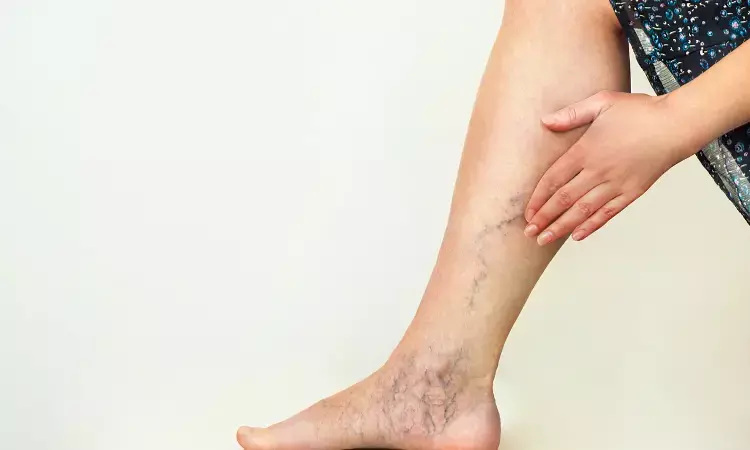- Home
- Medical news & Guidelines
- Anesthesiology
- Cardiology and CTVS
- Critical Care
- Dentistry
- Dermatology
- Diabetes and Endocrinology
- ENT
- Gastroenterology
- Medicine
- Nephrology
- Neurology
- Obstretics-Gynaecology
- Oncology
- Ophthalmology
- Orthopaedics
- Pediatrics-Neonatology
- Psychiatry
- Pulmonology
- Radiology
- Surgery
- Urology
- Laboratory Medicine
- Diet
- Nursing
- Paramedical
- Physiotherapy
- Health news
- Fact Check
- Bone Health Fact Check
- Brain Health Fact Check
- Cancer Related Fact Check
- Child Care Fact Check
- Dental and oral health fact check
- Diabetes and metabolic health fact check
- Diet and Nutrition Fact Check
- Eye and ENT Care Fact Check
- Fitness fact check
- Gut health fact check
- Heart health fact check
- Kidney health fact check
- Medical education fact check
- Men's health fact check
- Respiratory fact check
- Skin and hair care fact check
- Vaccine and Immunization fact check
- Women's health fact check
- AYUSH
- State News
- Andaman and Nicobar Islands
- Andhra Pradesh
- Arunachal Pradesh
- Assam
- Bihar
- Chandigarh
- Chattisgarh
- Dadra and Nagar Haveli
- Daman and Diu
- Delhi
- Goa
- Gujarat
- Haryana
- Himachal Pradesh
- Jammu & Kashmir
- Jharkhand
- Karnataka
- Kerala
- Ladakh
- Lakshadweep
- Madhya Pradesh
- Maharashtra
- Manipur
- Meghalaya
- Mizoram
- Nagaland
- Odisha
- Puducherry
- Punjab
- Rajasthan
- Sikkim
- Tamil Nadu
- Telangana
- Tripura
- Uttar Pradesh
- Uttrakhand
- West Bengal
- Medical Education
- Industry
PAD Causes Worse Outcome among patients with AMI and Cardiogenic shock

Cardiogenic shock (CS) complicates up to 10% of patients presenting with acute myocardial infarction (AMI), with one-third of those affected not surviving to hospital discharge.
A recent study suggests that peripheral artery disease (PAD) was linked with worse limb outcomes and survival among patients with AMI and Cardiogenic shock. The study findings were published in the Journal of the American College of Cardiology on March 28, 2022.
Those with comorbid PAD may represent a particularly high-risk group, potentially because of higher atherosclerotic burden and vascular access limitations for revascularization. However, no data are available on the outcomes of patients presenting with CS from AMI with comorbid PAD. Therefore, Dr Nino Mihatov and his team conducted a study to elucidate the association between comorbid lower extremity PAD and outcomes in CS and AMI.
In this study, the researchers used data on 71,690 Medicare fee-for-service beneficiaries aged ≥65 years hospitalized with AMI and CS. The major outcome assessed was in- and out-of-hospital mortality. They also assessed the incidence of bleeding, amputation, stroke, and lower extremity revascularization. They used multivariable regression models with adjustments for confounders to estimate risk. They also performed subgroup analyses in patients treated with mechanical circulatory support (MCS) and those who underwent coronary revascularization.
Key findings of the study:
- Among 71,690 patients, the researchers noted that 5.9% (N = 4,259) had PAD.
- They found that the cumulative in-hospital mortality was 47.2%, with greater risk among those with PAD (56.3% vs 46.6% without PAD; adjusted OR: 1.50).
- They noted that the PAD patients also had a greater risk of in-hospital amputation (1.6% vs 0.2%; adjusted OR: 7.0) and out-of-hospital mortality (67.9% vs 40.7%; adjusted HR: 1.78).
- They observed that the MCS was less frequently utilized in PAD patients (21.5% vs 38.6% without PAD; P < 0.001) and was associated with higher mortality, need for lower extremity revascularization, and amputation risk. Findings were consistent in patients who underwent coronary revascularization.
- They noted that the findings were consistent in patients who underwent coronary revascularization.
The authors concluded, "Among patients presenting with AMI and CS, PAD was associated with worse limb outcomes and survival. In addition to lower MCS utilization rates, those with PAD who received MCS had increased mortality, lower extremity revascularization, and amputation rates."
In an accompanying editorial, Dr Mehdi H. Shishehbor and Dr Yulanka Castro-Dominguez wrote, "Patients with AMI complicated with CS carry a high risk of mortality but may also benefit the most from potentially lifesaving interventions such as revascularization and MCS. Understanding how comorbid PAD can alter a patient's risk profile is crucial to be able to deliver the most appropriate therapies and specialized management. Indications for complex and large-bore interventions will continue to increase, while advances in techniques and devices will similarly evolve. Only with an interdisciplinary approach using expertise across different disciplines will we be able to reduce morbidity and mortality in this high-risk population with PAD."
For further information:
DOI: https://www.jacc.org/doi/pdf/10.1016/j.jacc.2022.01.037
Keywords:
Percutaneous coronary intervention, Coronary artery bypass grafting, Cardiogenic shock, Myocardial infarction, Mechanical circulatory support, Peripheral artery disease, In-hospital mortality, Out-of-hospital mortality, Journal of the American College of Cardiology
Medical Dialogues Bureau consists of a team of passionate medical/scientific writers, led by doctors and healthcare researchers. Our team efforts to bring you updated and timely news about the important happenings of the medical and healthcare sector. Our editorial team can be reached at editorial@medicaldialogues.in.
Dr Kamal Kant Kohli-MBBS, DTCD- a chest specialist with more than 30 years of practice and a flair for writing clinical articles, Dr Kamal Kant Kohli joined Medical Dialogues as a Chief Editor of Medical News. Besides writing articles, as an editor, he proofreads and verifies all the medical content published on Medical Dialogues including those coming from journals, studies,medical conferences,guidelines etc. Email: drkohli@medicaldialogues.in. Contact no. 011-43720751


